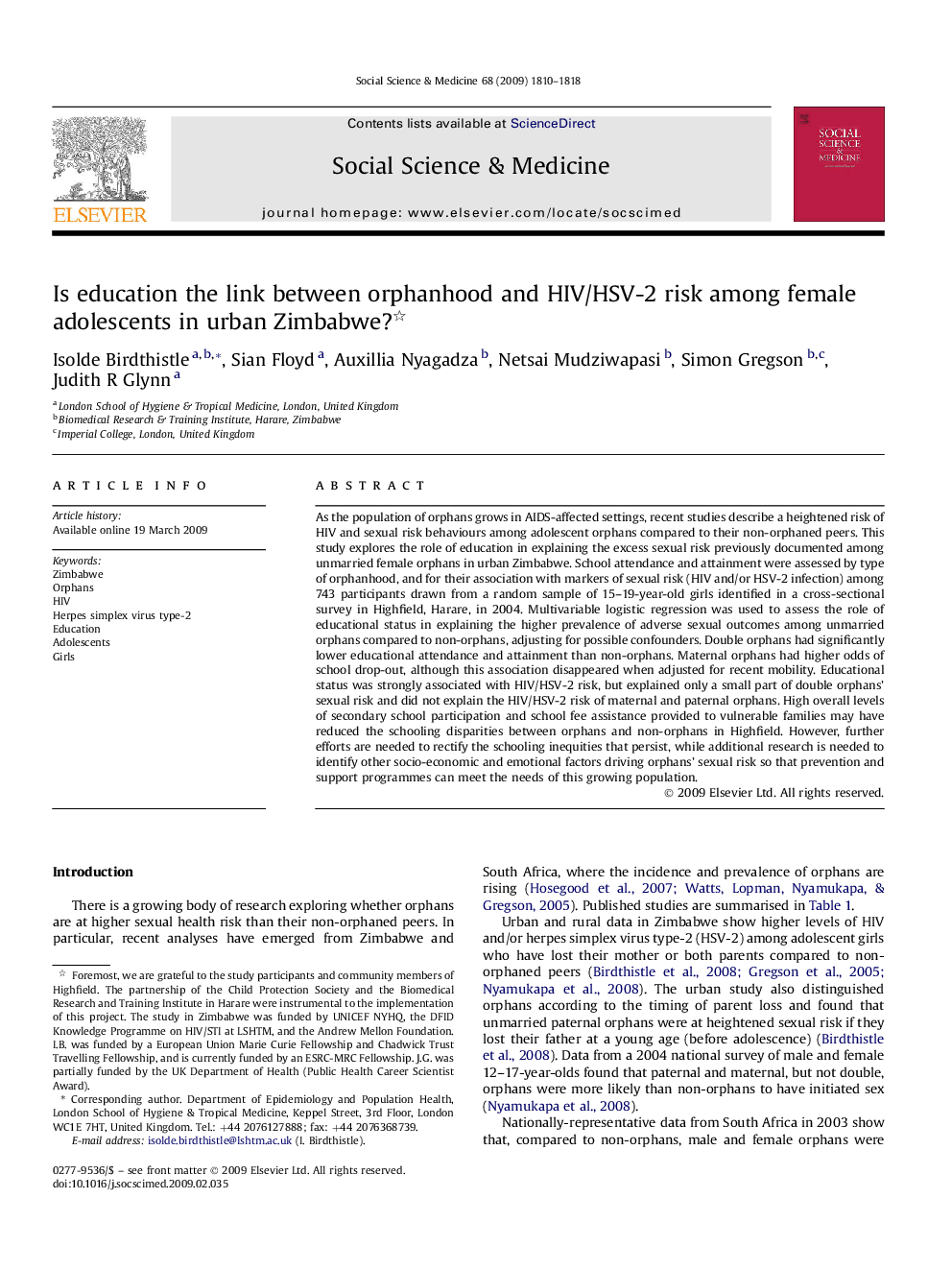| Article ID | Journal | Published Year | Pages | File Type |
|---|---|---|---|---|
| 953610 | Social Science & Medicine | 2009 | 9 Pages |
As the population of orphans grows in AIDS-affected settings, recent studies describe a heightened risk of HIV and sexual risk behaviours among adolescent orphans compared to their non-orphaned peers. This study explores the role of education in explaining the excess sexual risk previously documented among unmarried female orphans in urban Zimbabwe. School attendance and attainment were assessed by type of orphanhood, and for their association with markers of sexual risk (HIV and/or HSV-2 infection) among 743 participants drawn from a random sample of 15–19-year-old girls identified in a cross-sectional survey in Highfield, Harare, in 2004. Multivariable logistic regression was used to assess the role of educational status in explaining the higher prevalence of adverse sexual outcomes among unmarried orphans compared to non-orphans, adjusting for possible confounders. Double orphans had significantly lower educational attendance and attainment than non-orphans. Maternal orphans had higher odds of school drop-out, although this association disappeared when adjusted for recent mobility. Educational status was strongly associated with HIV/HSV-2 risk, but explained only a small part of double orphans' sexual risk and did not explain the HIV/HSV-2 risk of maternal and paternal orphans. High overall levels of secondary school participation and school fee assistance provided to vulnerable families may have reduced the schooling disparities between orphans and non-orphans in Highfield. However, further efforts are needed to rectify the schooling inequities that persist, while additional research is needed to identify other socio-economic and emotional factors driving orphans' sexual risk so that prevention and support programmes can meet the needs of this growing population.
